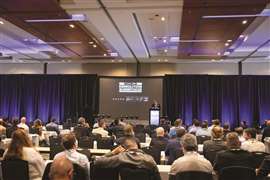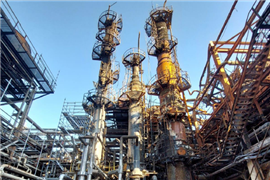Why demolition is only the start as US Environmental Protection Agency cleans up former electroplating site
15 February 2023
The US Environmental Protection Agency (EPA) has spoken of its relief at beginning demolition works on a notorious polluting site after an anxious seven-year wait for local residents.
Lane Plating, an electroplating works in the south of Dallas, Texas, was abandoned in 2016.
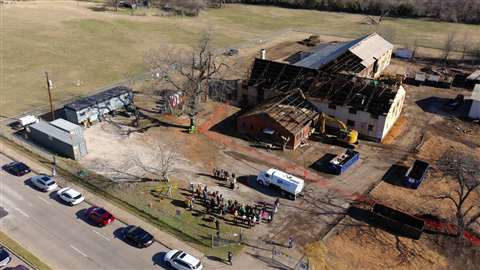 Demolition gets underway at the Lane Plating works in Texas. (All photos: US EPA)
Demolition gets underway at the Lane Plating works in Texas. (All photos: US EPA)
At that time, the EPA executed an emergency removal action to clear the site of liquid plating waste and abandoned drums. It was added to the National Priorities List (NPL) of the country’s worst sites among those known to house hazardous substances, pollutants or contaminants.
But it was not until last month that final demolition got underway – the EPA uses a mix of demolition contractors and environmental clean-up contractors with a demolition component.
Demolition will continue during the rest of February before the EPA’s remedial arm starts a long-term programme to make the site useable again.
“The site has been a long time coming,” said on-site coordinator Eric Delgado.
“After the emergency action, we quickly figured out that due to the statutes we work under at the EPA that we would not be able to clear up the whole site. We knew there would need to be additional studies, so we went in basically like firemen – taking care of the high hazard waste and buttoning the site up before passing it over for consideration for the NPL, and it was added to the list in 2018.
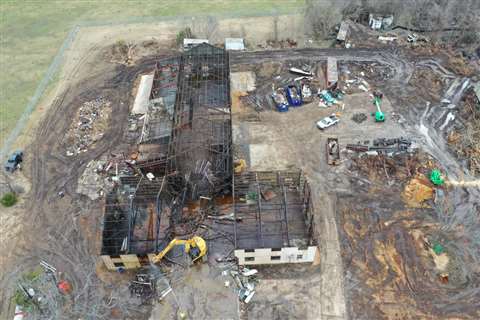 Wet demolition with dust suppression of the main facility at Lane Plating
Wet demolition with dust suppression of the main facility at Lane Plating
“However, we were still afraid. The site was unsecured, it was open access. We installed a security fence along almost 2 ha (five acres) of the site to prevent trespassers.
“From that the remedial investigation began but we got new information last summer that trespassers were coming on to the site. Either they were homeless and loitering in there or some more nefarious actions like stealing copper wire and metal scrap for them to take. Once we found that out the EPA very quickly came on to the site to see if these people were getting exposed.
“When we opened the doors to the building, we noticed a lot of yellow dust suspended in the air. We determined that we had to perform an activity-based type of sampling.
“We got the data back, we determined that there was an unacceptable risk for that trespasser scenario which triggered the site to then have a time critical removal action to take care of that threat.
“We were then given the green light in September last year and started the removal action in November, so the community, the local officials, and EPA in general are very excited to take care this site.”
The former Lane Plating works is classed as an Environmental Justice (EJ) site, based on a high priority government commitment from the Biden administration that public health and environmental protection should extend to all communities regardless of socio-economic or demographic background.
With the Lane Plating works having occupied the site for more than 90 years, long before modern US environmental laws were even though of, the remedial works will inevitably take far longer than the demolition.
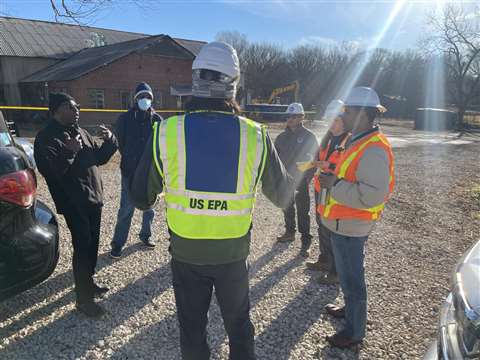 Discussing site operations with the Community Advisory Group and city representatives
Discussing site operations with the Community Advisory Group and city representatives
Kenneth Shewmake, the remedial project manager who handles the environmental side of the Lane Plating site, readily admits that the local population was so emotionally invested in drawing a line under the site’s history that this quickly became no ordinary project.
“We absolutely felt pressure,” he said.
“Lane Plating is on a perfect example of an EJ site, in an EJ community. It’s about 90% African-American and there are a number of polluting sites located in this community or close to it, such as businesses like metal recyclers, auto wrecking yards and landfill sites.
“So when the EPA said we were declaring this as a Superfund site – a polluted location requiring a long-term response to clean up hazardous material contaminations designated under the Comprehensive Enivronmental Response, Compensation and Liability Act 1980) – the community immediately felt this was the last step. There was just an immediate reaction, not just from the community, but with this being the election year of 2018, from local politicians as well.”
Currently, the EPA is working on the feasibility study for the site, and will evaluate several methods of executing the eventual clean-up before taking the preferred remedy, or proposed plan, to the community. After the community has its say, a record of decision will officially select the remediation approach, which will then be developed into the remedial design and remedial action.
The plan is to be at the remedial action stage by 2026, which the EPA describes as a relatively quick timeline for a remedial project.
“After the demolition work you will have contaminated soil, with the highest levels of contamination in the soil directly under where the building used to be,” said Kenneth.
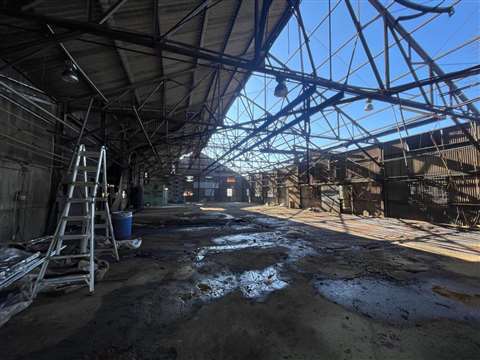 The EPA team finishes removing transite roof panels from the western side of the electroplating room
The EPA team finishes removing transite roof panels from the western side of the electroplating room
“There is also groundwater, which has a rock layer between 1.5 and 4.5 m (5 and 15 ft) below the rock surface that holds the groundwater on top. We are looking at some amendments to the soil that will lock things and turn the chemicals, particularly hexavalent chromium, to the a less toxic form.”
The EPA does not own the site, so it has no power over what ultimately happens to it.
Kenneth Shewmake: “We are going to work with the community to see if we can get the type of development they desire. We have some very good people and we have a terrific record of getting developers to come in and turn these sites into something productive for the community.”
Thankfully, due to expensive waste disposal costs, sites like Lane Plating are becoming fewer in number.
But some smaller business still exist and the EPA says its work is far from done.
“We do clean-ups everywhere,” said Eric Delgado.
“Anywhere there is a release, some of chemical, or oil discharge, we will go out and determine if an imminent and substantial danger exists to human health or the environment.”
CONNECT WITH THE TEAM







